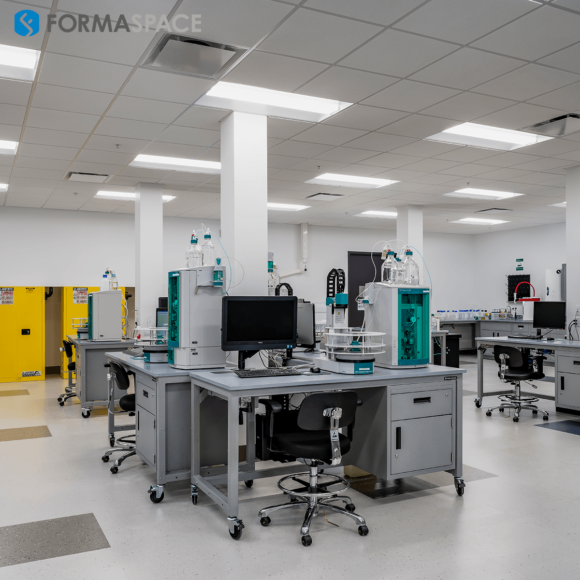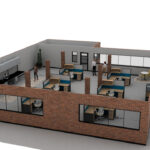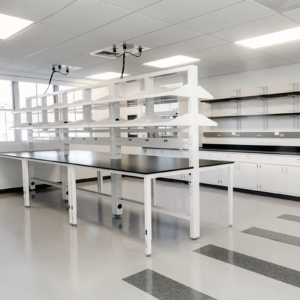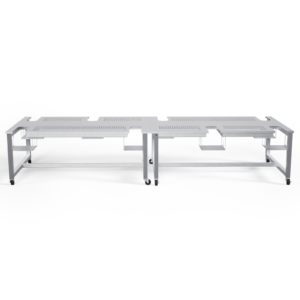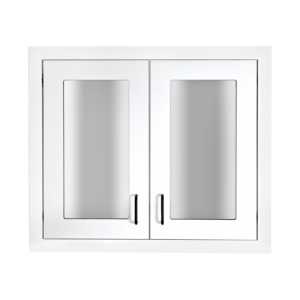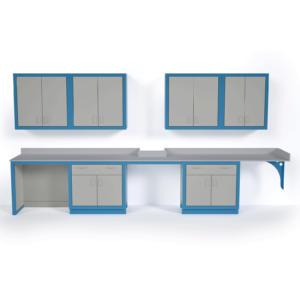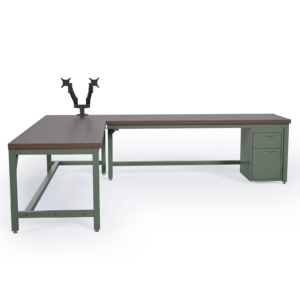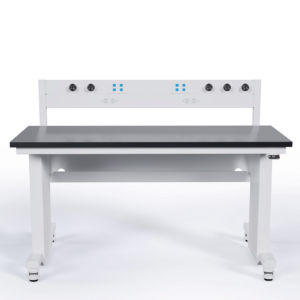A New Generation of Remote Healthcare Diagnostic Systems Allow Healthcare IT Managers to Deploy Systems to Monitor Patients in Remote Locations
Over the past year, the Coronavirus pandemic has brought about changes to nearly every industry.
In the healthcare segment, telemedicine adoption rates have skyrocketed in direct response to the pandemic lockdown.
Now, healthcare executives are looking at ways to combine the benefits of on-site doctor visits with the convenience of telemedicine – by making new investments in remote healthcare diagnostic systems.
But what do we mean exactly by remote healthcare diagnostics?

It turns out the most common example may be on your wrist.
New generation smartwatch solutions from Apple, Kardia, Samsung, and other vendors now offer heart rate pulse analysis using photoplethysmography (PPG) technology, which can help users identify undiscovered cases of Atrial fibrillation (AF).
In addition to detecting incidents of AF, the Apple Watch Series 4 also received FDA “clearance” as a Class II Medical Device as a single-lead electrocardiogram (ECG) recording device (Apple claims it can record results in just 30 seconds), it can also detect accidental falls (if the wearer does not get back up, the watch will call emergency responders automatically).
These watches fall into one of the fastest-growing segments in healthcare: Home Healthcare Medical Devices (HHMDs), which are designed to allow patients to perform basic home health tests without the need of specialists to operate them.
However, like many HHMDs, these new watches are far from capable of replacing a full suite of diagnostic equipment that a medical provider would need to substitute for an in-office visit.
For example, Apple has not sought clearance for its built-in oximeter, which is presumed not to be accurate enough to get a nod from the FDA. (In lieu of FDA clearance, Apple is free to market its oximeter as a “wellness” feature instead.)
At the other end of the remote diagnostics spectrum are Class III devices, the FDA’s most stringent category for medical devices – including all embedded medical devices (EMDs) such as pacemakers and implantable cardiovascular defibrillators (ICDs).
Here, the classic example of a remote diagnostic medical device technology is the combination of an insulin pump (the first implantable version appeared in 1984) with an embedded continuous glucose monitoring (CGM) system (first introduced in 2005). Over time, these devices have become smaller and “smarter,” allowing the combined system to automatically control insulin delivery using Closed-loop control (CLC) technology. More recently, these devices have gained the ability to “phone home” using mobile wireless technology to upload data to healthcare providers who provide “decision support” on patient care using the very accurate data records collected by the devices embedded in the patient.
Remote Diagnostic Systems Help Doctors Provide Quality Medical Care to Patients during Emergencies or to Remote Locations without Nearby Healthcare Options
As we pointed out in the introduction, the Coronavirus pandemic has accelerated the acceptance of telemedicine by patients, healthcare systems, and insurance companies by years, if not by a full decade.
This is creating a growing market for connected mHealth (mobile health) devices, which were once originally targeted for use by emergency responders or healthcare providers servicing remote areas or third-world countries with few local healthcare options.
Rapid advances in device miniaturization and increased power and flexibility of sensor devices powering the newest generations of these remote diagnostic devices are offering healthcare providers a tantalizing choice: could these devices offer the next best thing to examining a patient in person?
One recent example that’s come to market is the IDIS2GO diagnostic toolkit from the Austrian company SK Telemed.
This product features a basic set of diagnostic tools that fit into a small doctor bag (including temperature, pulse rate, blood oxygen levels, blood pressure, blood glucose level, basic urine analysis, respiratory function tests, electrocardiogram, and dermoscopic examination tools). It is supported by a camera and audio communication that allow a healthcare provider or EMT to conduct a typical physical exam as part of a telehealth visit. Collected data is sent to the company’s cloud data server, where it can be accessed by the healthcare provider. The system also provides built-in AI-powered analysis to provide design support assistance to the healthcare provider.
Will devices such as these become mainstream healthcare tools? The likely answer is not yet. Much depends on whether patients can use these systems effectively without in-person oversight. We discuss the key questions that healthcare providers need to answer before making remote diagnostic tools widely available for use in patient homes in the sections below.
Manufacturers and Maintenance Service Organizations Are Using Remote Diagnostic Tools to Manage, Upgrade, and Troubleshoot Equipment in Clinical Healthcare Settings
Alongside the rapid growth of telehealth during the Coronavirus pandemic, we’ve also seen a rapid uptake in the use of remote diagnostics by manufacturers (or maintenance organizations) – allowing them to repair medical equipment located in healthcare settings without having to come on-site for an in-person service call.

This type of remote service goes by many names, depending on the industry. It’s variously called Intelligent Device Management (IDM), Strategic Service Management (SSM), or Remote Device Management (RDM) – which is the term we will use here.
The ability of machines located in the field to phone home to their OEM manufacturer or maintenance organization is not new. One of the first industries to implement this was the airline business, which introduced Aircraft Communications Addressing and Reporting System (ACARS) back in 1978, using Telex technology (!) to send error reports via radio (and later satellite) datalinks.
More recently, most of us have experienced IT Help desks performing remote logins to access the computers we use for work to solve problems we have with our software programs or hardware devices.
Similar RDM technology is now becoming common among healthcare devices, which is good news for healthcare systems that need to keep critical equipment, such as CAT scan machines, in proper working order to avoid disruptions in inpatient care.
In the past, many of these high-tech devices, such as CAT scan machines, required on-site visits when things go wrong, even if it was just a minor faulty adjustment or unintentional user error. In response, many manufacturers are investing in enhanced diagnostic systems that allow off-site factory technicians to diagnose equipment errors and fine-tune their performance.
In many cases, manufacturers are also turning to augmented reality systems to allow healthcare technical staff and the manufacturer’s support team to work together (See the GE implementation in the video above), to diagnose and make adjustments (or even simple repairs) without the need for an on-site service call.
Healthcare CIOs Need to Understand the Advantages and Disadvantages of Remote Diagnostics Systems before Jumping into an Implementation
As we all know, clinical healthcare is a highly regulated field, which makes it difficult to integrate new, heterogeneous patient care systems into your existing set of standard operating procedures and compliance protocols.

Healthcare CIOs charged with evaluating new remote medical device implementations should investigate the following four areas very carefully before committing to purchase and implement these new technologies.
1. Integration Issues with Existing Compliance Workflows
Let’s look at an example of a patient that has been prescribed a new continuous glucose monitoring device.
We will (for the moment) take for granted that the FDA has approved the new device, that it’s safe to use as instructed, and that the patient’s protected health information (PHI) is properly encrypted (in accordance with HIPAA regulations) as it’s transmitted from the device to the vendor’s data cloud.
But that still leaves many questions, such as “where does the collected PHI data go from there?”
Can it be saved directly into your EHR system? If not, can you hire a consultant to connect the API of your EHR to import the data created by the new medical device? Or will deploying this new medical device further burden overworked scribes or PAs with manual processes to record PHI into the EHR?
Another question to consider is how to respond to a patient emergency. In the case of an embedded glucose monitor, what happens when the patient passes out from abnormally high or low blood sugar and is unable to call 911 for help? Is the healthcare provider who prescribed the medical device culpable for (or even capable of) responding to this type of emergency? If so, how?
The third issue is one of managing BYOD complexity. Integrating a new system into an existing set of standard operating procedures is hard, so a healthcare CIO needs to ask critical questions, such as these:
How many unrelated medical device vendors (offering single-point solutions) can you reasonably manage at one time – or is it better to choose a larger, more established vendor that may not be as bleeding-edge but offers better integration with your existing patient care procedures?
Will the new startup medical device vendor stay in business or fail? Or will it get purchased by a larger entity – which could result in significant cost increases (or other unfavorable changes, such as forced migrations to a different technological solution) when the service contract is up for renegotiation.
2. Potential Security Threats Created by Remote Healthcare Medical Devices
Device security is another area of major concern for healthcare CIOs considering the implementation of new remote healthcare devices.
Healthcare executives are all too aware of the threats from hacker intrusions, from recent ransomware episodes targeting hospitals to ongoing attempts to steal valuable patient data.
Adding new IoT devices (such as remote medical devices) into the mix only raises the threat risk, as any parent with a baby monitor knows (thanks to an invasive spying attack on these devices a few years back).
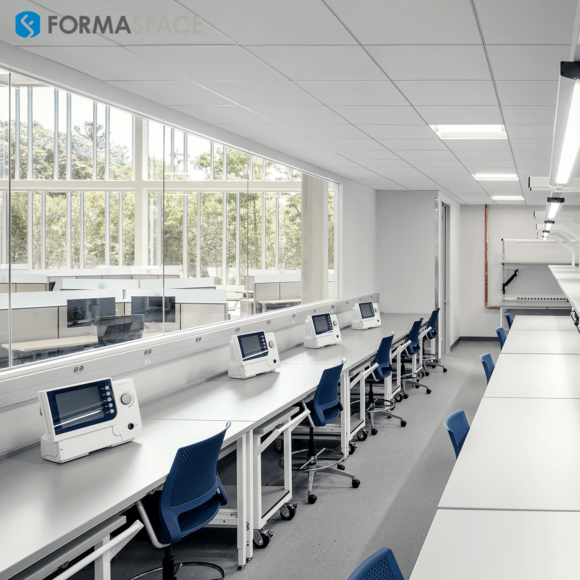
Hackers who take control of remote medical devices could wreak more havoc than spying on infants – they could cause machines to malfunction, even kill patients, by altering test results or even upping medicine dosages to lethal levels.
How can you assess and mitigate these security risks?
Are you interested in learning more about mobile device hardware and programming? We recommend the textbook “Making Things Talk, 3rd Edition” by Tom Igoe, published by MakerMedia.
It’s instructive to break down these IoT-related security issues into their individual components; we’ll start with wireless connectivity.
A) Evaluating the Security of Wireless Connectivity in Medical Devices
Most mobile medical devices use a wireless protocol (either WiFi or Bluetooth) to “phone home” – a process known to device engineers as supervisory control and data acquisition (SCADA).
Unfortunately, some device manufacturers use off-the-shelf Bluetooth or WiFi radio components that broadcast unencrypted signals using the standard default factory device settings. A diligent hacker could intercept these signals at close range to reverse engineer the communication protocols to take over control of the device. Can the vendor of the proposed medical device demonstrate how they protect their wireless data systems from intrusion?
B) Evaluating IoT Medical Device Hardware and Software Security Threats
Just as device engineers have many choices among miniature Bluetooth or WiFi radios, so too can they select from a wide variety of miniature computing devices – essentially computers on a small chip. In many cases, the result is a remote medical device that operates like a tiny computer, complete with a boot-up device, an operating system (typically some flavor of Linux), onboard data storage (to buffer, e.g. store, data packets in-between upload connections), and some kind of user interface (such as a touch screen or audio device). The bottom line for healthcare IT professionals is that most of these devices, being essentially computers, need the same kind of regular update patches to keep them secure. Does the system under consideration provide for this?
C) Authentication and Encryption When Uploading Data to the Cloud
How can we be sure a device connecting to the cloud is genuinely who it claims to be?
Medical device manufacturers can use a combination of hardware-based identification as well as software public/private keys to authenticate a session for transmitting encrypted packets to the cloud server. Any systems that transmit data “in the open” (e.g. unencrypted) are unsuitable for healthcare applications due to the risk of exposing private health information.
D) Are Open Standards-Based Solutions a Way Forward for the Future?
Are there better ways to ensure remote medical device security and usability?
We could look to the auto industry for inspiration, which (thanks to air pollution regulators in California) uses a standardized, onboard diagnostics (OBD) protocol that allows any manufacturer to build compliant devices to scan and retrieve vehicle diagnostic trouble codes (DTCs).
Having such standards for remote medical devices in the healthcare field would make sense, as manufacturers could focus on creating innovative medical solutions without having to reinvent the wheel for each new device coming on the market. (This could make the FDA’s job easier as well when certifying medical devices for secure data connectivity protocols.)
Open-source software for communication protocols could also help reduce the risk of hacking as well, by making it easier for programmers to find and fix security holes that can be hard to identify in systems written in proprietary code.
4. Concerns about AI-based Clinical Decision-Making by Remote Healthcare Diagnostic Systems
The introduction of new mobile healthcare diagnostic devices also calls into question the pros and cons of artificial intelligence (AI) systems.
AI-based systems are making great strides in certain areas of medicine, such as evaluating patients for disease, by successfully reading chest x-rays to identify cancer tumors, for example.
AI can also help manage some of the most frustrating situations facing caregivers. According to reports, between 72% to 90% of urgent alerts from medical devices turn out to be false alarms, creating what the American Association of Critical Care Nurses calls a national crisis of “alarm fatigue.” AI systems can help reduce the urgent false alarms dramatically (by as much as 99.3%, according to one study) – allowing caregivers to focus on true emergencies.
However, medical professionals must remain in control and not let AI systems substitute for human oversight from doctors, nurses, and other caregivers.

We cannot forget that AI systems – at their very best – are only as good as the input data they receive. In many cases, there are major gaps in that data, whether due to inherent gender or racial biases, unequal data collection during medical studies, or other inequities.
One glaring example has come to light during the Coronavirus pandemic. A research team publishing in the New England Journal of Medicine found that many pulse oximeter devices (which infer blood oxygen levels from light density readings at the fingertip) were found to provide inaccurate blood oxygen readings for those with darker skin, a devastating situation given that many caregivers use pulse oximeter readings to identify severe Covid patients who need immediate hospitalization.
5. Protocols Needed to Ensure Patient Compliance when Using Remote Healthcare Diagnostic Systems
Last on our list of remote medical device pros and cons is evaluating whether a remote healthcare diagnostic system is appropriate for the patient.
It’s easy to let one’s enthusiasm for technology take over.
But we have to ask, is the technology-based solution the best one for the patient?
What about sight or hearing impaired patients or elderly patients with little technological prowess? Is the proposed remote healthcare solution appropriate for them? Will patients at home understand how to use a device? Could they harm themselves by misusing it? Would the device require one or more home visits to teach the patient how to use the device effectively?
Patient compliance is another issue. Can you have confidence the patient will comply with the prescribed protocol? Is there a way for the patient to “game the system” and alter the results for some reason? Does the device itself have the ability to monitor and report back if it’s not being used correctly?
Another concern is that patients will use the new technologies to self-diagnose their conditions and change their course of treatment against medical advice (AMA). Medical experts are also concerned that lay patients, who by definition lack medical training, become unnecessarily alarmed by diagnostic tests they don’t understand, which in turn could drive up the demand for unnecessary doctor visits and diagnostic tests.
These are important considerations to investigate before implementing a new remote healthcare medical device program.

Formaspace is Your Healthcare Facility Partner
If you can imagine it, we can build it, here at our factory headquarters in Austin, Texas.
Leading healthcare systems, clinical laboratories, and educational research facilities rely on Formaspace for custom solutions when building new healthcare facilities or undertaking major remodeling efforts.
Find out how we can work together.
Contact your Formaspace Design Consultant today.


